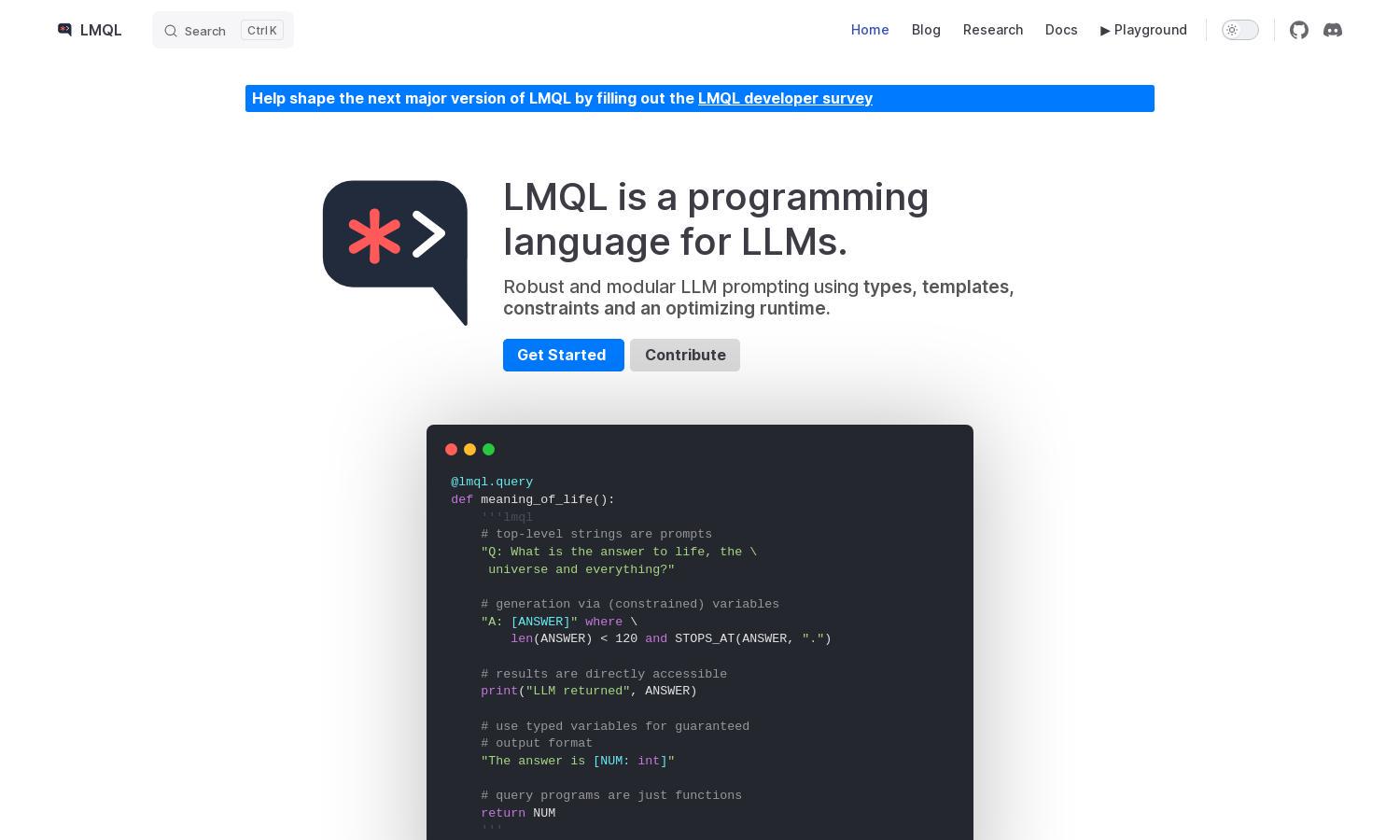LMQL

About LMQL
LMQL is a cutting-edge programming language focused on LLM interaction, enabling users to create complex queries with ease. Its innovative modular design allows for efficient prompt construction and supports real-time optimization, making it ideal for developers and researchers aiming to enhance AI communication.
LMQL offers a free tier for basic functionalities, with a premium plan providing advanced features for regular users. Upgrade benefits include enhanced performance, exclusive templates, and guided support, offering users more value and control over their language model interaction.
The user interface of LMQL is designed for simplicity and efficiency, providing a clean layout that facilitates quick navigation. Its intuitive design combines powerful tools with user-friendly features, ensuring that both novices and experienced developers can easily harness its capabilities.
How LMQL works
Users begin their journey with LMQL by signing up and familiarizing themselves with its tools. They can access tutorials for creating queries and utilize its modular functions to construct prompts interactively. The straightforward interface ensures that users can effortlessly navigate through features, allowing them to maximize their language model queries.
Key Features for LMQL
Modular Query Structure
The modular query structure of LMQL allows for advanced template creation, letting users easily customize and optimize their language model interactions. This unique feature sets LMQL apart, enabling developers to build reusable prompt components that significantly enhance querying efficiency and flexibility.
Nested Queries Support
With LMQL's support for nested queries, users can create sophisticated and organized prompts that efficiently reuse components. This feature enhances programming practices, allowing developers to streamline their query construction and achieve cleaner, more effective results in their language model interactions.
Cross-Backend Compatibility
LMQL's cross-backend compatibility ensures seamless portability of code across multiple platforms with minimal adjustments. This distinctive feature empowers developers to easily switch between different LLMs, enhancing flexibility and encouraging experimentation without the hassle of extensive code rewriting.
You may also like:







